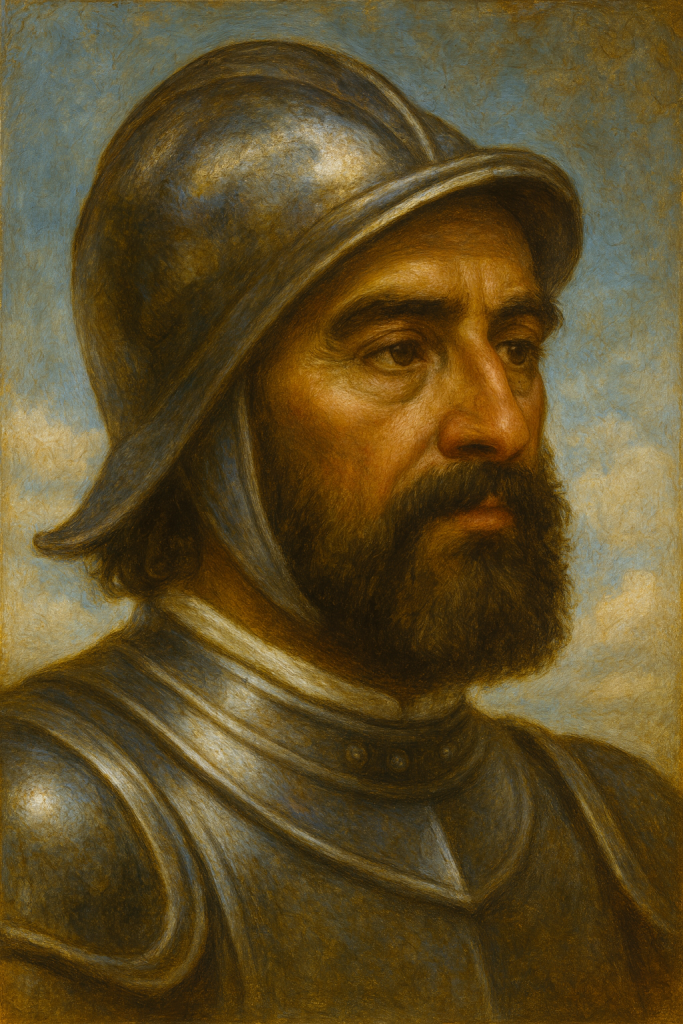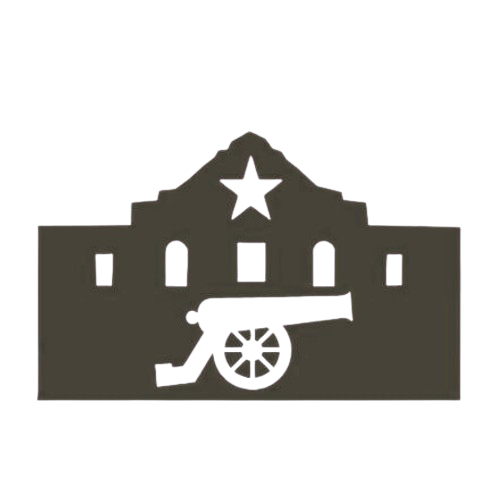
CRISTÓBAL DE OÑATE (1504 – 1567)
Spanish Basque Conquistador, Explorer, Founder of the Silver Mines of Zacatecas, Governor of New Spain
Born: 1504 · Vitoria, Álava Province, Basque Country, Spain
Died: October 6, 1567 · Pánuco, Viceroyalty of New Spain (Zacatecas, Mexico)
Parents: Don Juan Pérez de Oñate and Doña Osaña González de Isasi
Spouse: Doña Catalina de Salazar y de la Cadena
Child of Connection: Don Juan de Oñate y Salazar y de la Cadena (1550–1626) — Founder of Santa Fe and First Governor of New Mexico. Married Doña Isabel de Tolosa Cortés de Moctezuma, daughter of Hernán Cortés and granddaughter of Emperor Moctezuma II.
Blood Relation: 16 generations (430 years) to The Esparza Sisters
Legacy:
A Basque nobleman of Vitoria, Don Cristóbal de Oñate was one of the great conquistadors of New Spain. As lieutenant to Nuño de Guzmán, he explored and settled the northern provinces of Nueva Galicia and founded Guadalajara in 1531, one of colonial Mexico’s major cities. Later, as Governor of Nueva Galicia, he sponsored the exploration and mining of Zacatecas, whose silver transformed the Spanish Empire’s wealth.
Through his son Don Juan de Oñate, the family carried Basque and Castilian nobility north into the frontiers of New Mexico. By intermarriage with the Salazar, de la Cadena, and later the de la Garza, Uribe, and Esparza families, Cristóbal de Oñate stands as an ancestral patriarch of the Basque–Mexican bloodline that extends approximately eleven generations to the Esparza Sisters of South Texas.
Father: Juan Pérez de Oñate, a Basque Noble House of Oñate
Mother: Osaña González (aka Ana de Salcedo, but most records note “Osaña González”)
Origins: Born in Oñate (Oñati), Gipuzkoa, Spain in 1504. The Noble House of Oñate is one of the oldest and most powerful Basque lineages, tracing back to the medieval ages
Migration: Traveled to New Spain in the 1520s as one of the original Basque conquistadores of the new world
Conquests & Settlements: In the 1530s, joined Nuño de Guzmán’s conquest of Nueva Galicia and co-founded Guadalajara, later its capital.
Mines of Zacatecas: Partnered with Juan de Tolosa (another Basque) and Diego de Ibarra. Oñate was instrumental in developing the silver mines of Zacatecas (1546), which became one of the greatest sources of wealth for Spain
Marriage: Wed Doña Catalina de Salazar y de la Cadena, from a prominent settler family
Family: Fathered 7 children (possibly 8), who intermarried with families such as: Tolosa, Cortés–Moctezuma, Zaldívar, Ibarra, Treviño, Romo de Vivar
Basque Heritage and Early Life
Cristóbal de Oñate was born in 1504 in the Basque province of Guipúzcoa, Spain, into an ancient noble family of minor lords and royal administrators. The Oñate lineage traced its roots to the mountainous region of Navarre and Guipúzcoa, closely tied to the medieval Basque nobility (hidalgos de solar conocido). This heritage endowed Oñate with both the martial and administrative traditions that characterized Basque participation in Spain’s imperial expansion.
Arrival and Rise in New Spain
He arrived in New Spain around 1524, accompanying early conquistadors during the consolidation of central Mexico. Oñate became one of the Basque captains who played a critical role in extending Spanish control northward into the frontier provinces. His early service under Nuño de Guzmán, the ruthless president of the Audiencia of Mexico, led him into the campaigns that subdued the regions of Nueva Galicia, including Zacatecas and Jalisco
Founding of Cities and the Silver Frontier
Cristóbal de Oñate emerged as one of the founders and builders of northern New Spain. In 1531, he co-founded Guadalajara, which would later become the capital of Nueva Galicia. He was instrumental in establishing Zacatecas (1546) after discovering its rich silver deposits alongside Basque and Castilian adventurers such as Juan de Tolosa and Diego de Ibarra. These discoveries transformed Zacatecas into the silver capital of New Spain, anchoring Spain’s colonial wealth for more than two centuries.
Governorship and Legacy
Oñate served as Governor of Nueva Galicia, where his administration was marked by relative moderation compared to his predecessor, Guzmán. He worked to stabilize relations between Spanish settlers and Indigenous communities, rebuild cities destroyed by earlier campaigns, and encourage lawful settlement in the northern provinces.
He married Doña Catalina de Salazar y de la Cadena, a noblewoman of Castilian descent, uniting the Basque Oñate and Castilian de la Cadena families. Their son, Don Juan de Oñate y Salazar (1550–1626), inherited both his father’s frontier ambition and his mother’s noble lineage—leading the 1598 expedition that colonized New Mexico.
Historical Impact
Cristóbal de Oñate represents the archetype of the Basque frontier conquistador-administrator: disciplined, pragmatic, and deeply tied to Spain’s colonial expansion in northern New Spain. His legacy includes:
◉ The founding of Guadalajara, Zacatecas, and other settlements that became key trade and administrative centers.
◉ The establishment of Basque settlement networks that connected Guadalajara, Zacatecas, and Monterrey.
◉ A family lineage that continued Spain’s northern colonization through his son Juan de Oñate, linking directly to the later Esparza, de la Garza, and Uribe families through intermarriage.
Cristóbal de Oñate’s life symbolizes the transition from conquest to colonization in northern New Spain. His Basque nobility, frontier leadership, and role in founding the silver cities of Zacatecas and Guadalajara made him one of the essential architects of Spain’s northern empire—a legacy that lives on through his descendants in the Oñate, de la Cadena, and Esparza-Guajardo lines.

Leave a Reply